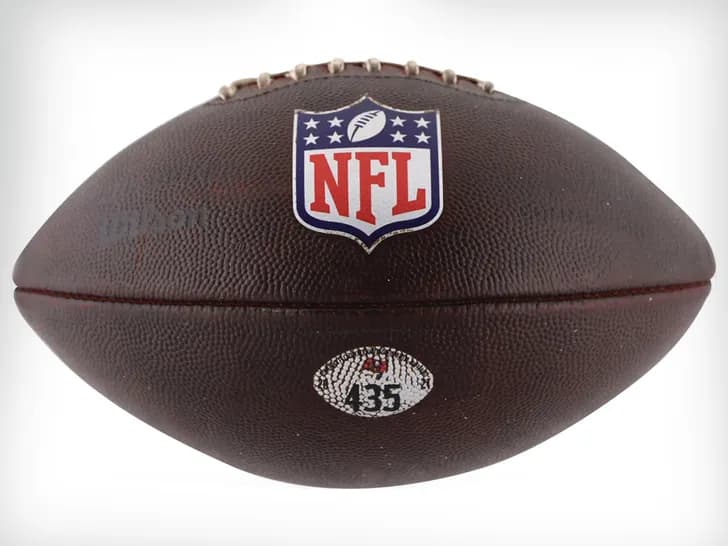“As is” – “Where is” – “With All Faults” . . . . Those phrases have been uttered by auctioneers, and written into Bidder Terms and Conditions, probably for as long as there have been auctioneers. The purpose is to disclaim any and all implied warranties by the auctioneer. They are part of the contract between the auctioneer and each bidder. They also become part of the contract of sale between the seller and the buyer, in turn, disclaiming any and all implied warranties by the seller. “AS IS,” “WHERE IS,” and “WITH ALL FAULTS” are examples of the allocation of risk, which is an essential function of contracts. Parties to a contract can agree as to who will bear certain risks, and, absent exceptional circumstances, the courts will not disturb that agreement.
“AS IS,” “WHERE IS,” and “WITH ALL FAULTS” are important and viable tools in any sales transaction, and they have particular significance in the auction industry. There are numerous cases in which the courts have upheld the “AS IS” disclaimer in an auctioneer’s Bidder Terms and Conditions, thereby (i) holding buyers to the risks voluntarily assumed in exchange for the privilege of bidding and (ii) allowing the auctioneer to overcome after-the-fact challenges based on the nature, character, or quality of goods sold at auction (or the buyers’ subjective expectations as to the nature, character, or quality of goods sold at auction). Now, with travel and assembly restrictions associated with the COVID-19 pandemic driving more and more auction activity toward online bidding platforms, and considering the near universal inability to have pre-auction inspections, it is important to address some misinformation that may lead to uncertainty within the auction community, along with possible reluctance to include these important disclaimers in the Bidder Terms and Conditions for online-only auctions while social distancing (assuming that online-only business activity is otherwise permitted in your jurisdiction during the shutdown). Additionally, there is a concern that a repeated misstatement of the law in this area can result in elevated and unjustified expectations among buyers who – notwithstanding clear and unambiguous Bidder Terms and Conditions – may be led to believe that they are entitled to more than what they bargained for.
The particular language of concern – and source of confusion – is the statement, floated on social media and among auction groups, that the Supreme Court of the United States has said that if you’re going to sell "AS IS" at auction you must provide for a preview and a reasonable opportunity for pre-auction inspection. Now, if that were true, and if a United States Supreme Court decision on contract law was necessarily binding on the states, then, it might raise a legitimate issue as to whether an auctioneer can sell “AS IS” while social distancing. However, as will be discussed below, it is not true that the United States Supreme Court has said that if you’re going to sell "AS IS" at auction you must provide for a preview and a reasonable opportunity for pre-auction inspection. Moreover, the law of contracts affecting most auction transactions is state law, and a decision by the United States Supreme Court on a state contract law issue (not involving the United States Constitution or a federal statute) is not binding on the states. This is because, under our federalist system of government, the highest appellate court in each state is the final authority on the meaning of that state’s law.
The fodder for this erroneous argument about the requirement of pre-auction inspection in order to sell “AS IS” appears to be a misinterpretation, and misrepresentation, of Mottram v. United States, 271 U.S. 15, 46 S.Ct. 386, 70 L.Ed. 803, which was decided by the United States Supreme Court in 1926. The Mottram case has been cited to auctioneers (and, I suppose, to people looking to sue auctioneers or to, otherwise, avoid their contractual obligations) for the proposition that property can only be sold "AS IS" at auction if it is made available for inspection prior to the bidding. Specifically, it has been suggested that, in Mottram, the Supreme Court established a "minimum standard" for "AS IS" auction sales, applicable to all auctioneers in the United States, by prescribing that a buyer at auction can only be held to an "AS IS" transaction if the property is open for inspection and the buyer has had a reasonable opportunity for preview. This interpretation of Mottram, however, is just plain wrong and suggests a legal requirement that doesn’t exist. Whether or not it is a good idea to make pre-auction inspection available (and I, personally, think it is a good idea, when possible), there is a world of difference between preferred practices and things that are mandated as a matter of law. Blurring the line between practice preferences and legal requirements creates confusion and may embolden those suffering buyer’s remorse to try to avoid risks that were willingly assumed at the time of biding.
As a preliminary matter, it is important to recognize that issues related to auction sales will, typically, be governed by state contract law or (depending on the specific circumstances) state tort law. Contracts and torts are largely matters of state law, and neither the United States Supreme Court, nor the lower federal courts, can dictate the meaning of state law. Simply put, the United States Supreme Court can tell you what the United States Constitution means, can tell you what federal statutes mean, and can tell you whether a state law violates the United States Constitution or a federal statute, but cannot definitively tell you what any particular state law means or speak to the enforceability of contracts as a matter of state law. While the United States Supreme Court, and the lower federal courts, can opine as to the meaning of state law, such an opinion is not binding, but is persuasive at best. As such, even if United States Supreme Court articulated some standard for “AS IS” sales at auction in Mottram (which it did not), that standard would not be binding on the states.
By way of background, in Mottram, the United States government (pursuant to an act of Congress) was selling WWI surplus at auction. An auction catalogue for goods stored at a depot in Slough, England listed 11 lots of Garlock packing. Due to an error in the catalogue, the quantity was expressed in hundredweights instead of pounds. Because of the mistake, the catalogue indicated one hundred times more than the actual quantity being sold. The Bidder Terms and Conditions, however, provided that “[t]he whole shall be sold, with all faults, imperfections, errors of description, in the lots of the catalogue . . . and without any warranty whatever . . . .” Essentially, this stated an “AS IS” standard.
The buyer in Mottram received the catalogue, inspected the Garlock packing (as he was encouraged to do), and was the winning bidder at the auction. Additionally, when the Garlock packing came across the block, the buyer asked the auctioneer to confirm the quantity, and the auctioneer stated that he would not guarantee any quantity. After the auction, the buyer demanded that quantity of Garlock packing erroneously published in the catalogue be delivered to him for the hammer price. However, under the Bidder Terms and Condition – which the buyer had accepted as a condition to the privilege of bidding – the buyer assumed the risk as to the actual quantity. And, although he had inspected the lot and seen the actual quantity, the risk would have been his even had there been no inspection. Essentially, the buyer in Mottram attempted to avoid a risk that he had voluntarily assumed pursuant to the Bidder Terms and Conditions, and tried to take advantage of a mistake in the catalogue to get more that what he bargained for. When the government informed the buyer that he was going to be held to the Bidder Terms and Conditions, he filed a petition seeking damages because of the shortfall in quantity.
The Court noted that the buyer “was warned by the statement in the catalogue that the sales were to be held subject to errors of description and were to be made without any warranty.” And, while the phrase “AS IS” was not actually used in Mottram, the case stands for the proposition that selling “AS IS” can be used to pass certain risks onto the bidders and buyers. The fact that the buyer inspected the property in Mottram cut against his claim that he was entitled to something other than what was actually offered, and something other than what actually sold, but that was not the Court's holding, nor was it essential to the Court’s decision. Mottram neither states, nor suggests, that the buyer MUST be afforded an opportunity to inspect in order for an “AS IS” sale to be effective. It just doesn’t say that, and it cannot be relied on for that purpose. Whether or not there are practical benefits to making property available for inspection is a different issue entirely; it’s just not required as a matter of law. Here is a link to the Mottram decision: https://www.law.cornell.edu/supremecourt/text/271/15. Feel free to read the case, and see if you can find where it says that an inspection is necessary in order to sell “AS IS” at auction – it’s just not there. Moreover, the Mottram case involved the sale of war surplus pursuant to an Act of Congress, and any precedent coming out of Mottram would not be binding on the states or otherwise control the application of state contract law.
So, if the Mottram case doesn’t actually say what has been attributed to it, and, in any event, doesn’t control the use of the “AS IS” disclaimer for most auctions conducted under state law, then what does? Well, when you are dealing with the sale of goods, the best place to start is probably Article 2 of the Uniform Commercial Code – which is a state statute (meaning that it is state law) adopted in every state except Louisiana. UCC Section 2-316 specifically addresses the exclusion or modification of warranties, and provides several alternatives for the disclaimer of implied warranties. Section 2-316(2) allows for certain warranties to be disclaimed by specific and conspicuous reference. More broadly, UCC Section 2-316(3)(a) provides that all implied warranties are excluded by expressions like "AS IS," "WITH ALL FAULTS" or other language that calls the buyer’s attention to the exclusion of warranties and makes it clear that that there is no implied warranty. UCC Sections 2-316(3)(b) and (c) provide alternative methods for disclaiming implied warranties, including through the buyer’s inspection of, or failure to inspect, the goods (Section 2-316(3)(b)), or through a course of dealing, course of performance, or usage of trade (Section 2-316(3)(c)). There is nothing in Section 2-316, however, that requires both an "AS IS" disclaimer and a pre-sale inspection. And, there is nothing in the UCC, or in the case law, that suggests Section 2-316 applies differently to auction sales and to non-auction sales. Additionally, although not the point of this article, it should be noted that the "AS IS" disclaimer can be fairly described as a usage of trade in the auction industry (UCC Section 1-303(c) defines a "usage of trade" as "any practice or method of dealing having such regularity of observance in a place, vocation, or trade as to justify an expectation that it will be observed with respect to the transaction in question").
As observed by the Delaware Superior Court in Lecates v. Hertrich Pontiac Buick Co., 515 A.2d 163, 167-68 (Del. Super. Ct. 1986), UCC Section 2-316(3)(a), (b), and (c) provide alternative methods by which sellers may shift risk to buyers. Similarly, in Boyd v. Steve’s Key City Auto, 91 N.E.3d 910, 914 (Ill. App. Ct. 2017), the Illinois Appellate Court noted that use of the phrase “AS IS” plainly indicates there is no warranty being implied in the sale. In Moustakis v. Christie’s, 68 A.D.3d 637 (N.Y. App. Div. 2009), a New York appellate court focused on the auction company’s Bidder Terms and Conditions, which provided that “all property is sold ‘as is’ without any representation or warranty of any kind by [the auctioneer] or the seller.” The court, went on to note that “UCC 2-316(3)(a) recognizes that ‘unless the circumstances indicate otherwise, all implied warranties are excluded by expressions like ‘as is’ . . . which in common understanding calls the buyer’s attention to the exclusion of warranties and makes plain that there is no implied warranty.’” Because of the auctioneer's use of the “AS IS” disclaimer, it was not necessary for the Moustakis court to go any further, or to consider whether a preview was also available to the bidder. Thus, it is clear that implied warranties can be disclaimed (i) by contract (with use of the words “AS IS” and “WITH ALL FAULTS”), or (ii) by inspection (or waiver of inspection), or (iii) or through a course of dealing, course of performance, or usage of trade. UCC Article 2 – which is the law applicable to the sale of goods – does not require both the use of the phrase “AS IS” and an opportunity to inspect in order for the “AS IS” disclaimer to apply.
As a matter of practice, does making pre-auction inspection available help deflect buyer’s remorse, and hold a buyer to the allocation of risk agreed to before the auction? Sure, and, to that end, the following language has been used when a preview was available:
ALL PROPERTY SOLD “AS IS,” “WHERE IS,” AND “WITH ALL FAULTS.” ALL PROPERTY IS BEING OFFERED AND SOLD IN ITS AS IS/WHERE IS CONDITION AT THE TIME OF THE AUCTION, WITH ALL FAULTS, INCLUDING ANY HIDDEN DEFECTS OF ANY NATURE. NEITHER AUCTIONEER NOR SELLER MAKES ANY REPRESENTATIONS, WARRANTIES, OR GUARANTEES WHATSOEVER, EXPRESS OR IMPLIED, REGARDING THE NATURE, VALUE, SOURCE, AUTHENTICITY, FITNESS, MERCHANTABILITY, AND/OR ANY OTHER ASPECT OR CHARACTERISTICS OF SUCH PROPERTY. NO STATEMENT ANYWHERE, WHETHER EXPRESS OR IMPLIED, INCLUDING VERBAL STATEMENTS MADE BY AUCTIONEER, WILL BE DEEMED A WARRANTY OR REPRESENTATION BY AUCTIONEER OR SELLER. WITHOUT LIMITING THE GENERALITY OF THE FOREGOING, THERE ARE NO WARRANTIES OF NON-INFRINGEMENT, AUTHENTICITY, ORIGIN, MERCHANTABILITY, OR FITNESS FOR A PARTICULAR PURPOSE, ALL OF WHICH ARE EXPRESSLY DISCLAIMED. YOU ACKNOWLEDGE AND AGREE THAT YOU CANNOT RELY, AND HAVE NOT RELIED, ON ANY REPRESENTATION, WARRANTY, OR GUARANTY MADE BY AUCTIONEER OR THE SELLER, OR ANYONE ACTING AS AGENT OF THE SELLER, ORALLY OR IN WRITING. BY BIDDING, YOU ACKNOWLEDGE AND AGREE THAT YOU HAVE HAD A FULL AND FAIR OPPORTUNITY TO INSPECT THE PROPERTY, AND THAT YOU ARE RELYING SOLELY ON, OR THAT YOU HAVE WAIVED, SUCH INSPECTION AND INVESTIGATION (i) IN DETERMINING WHETHER TO BID, (ii) IN DETERMINING THE AMOUNT OF A BID, AND (iii) IN BIDDING.
While both “AS IS” language and an inspection are not necessary to effect an “AS IS” sale, having more than one arrow in your quiver is always useful – you’re just not required to use them all. Remember, the Supreme Court’s decision in Mottram, just like the decision in Moustakis, was based on the allocation of risk set forth in the Bidder Terms and Conditions, and, therefore, agreed to as a matter of contract. The fact that the buyer in Mottram also inspected the property doesn’t change the holding of the case, or add an additional condition to the effectiveness of the contractual language. As a practical matter, many bidders in online-only auctions accept the “AS IS” character of the sale without ever taking the opportunity to inspect.
Given the foregoing, neither Mottram nor any arguments derived from Mottram require the realignment of the allocation of risk in an “AS IS” transaction during social distancing. And, mandated social distancing need not be a reason for an auctioneer or seller to assume additional risks regarding the nature, character, or quality of goods sold at auction. Nevertheless, it might be helpful to modify your Bidder Terms and Conditions to specifically reflect the agreed allocation of the risk when no preview is available –
ALL PROPERTY SOLD “AS IS,” “WHERE IS,” AND “WITH ALL FAULTS.” ALL PROPERTY IS BEING OFFERED AND SOLD IN ITS AS IS/WHERE IS CONDITION AT THE TIME OF THE AUCTION, WITH ALL FAULTS, INCLUDING ANY HIDDEN DEFECTS OF ANY NATURE. NEITHER AUCTIONEER NOR SELLER MAKES ANY REPRESENTATIONS, WARRANTIES, OR GUARANTEES WHATSOEVER, EXPRESS OR IMPLIED, REGARDING THE NATURE, VALUE, SOURCE, AUTHENTICITY, FITNESS, MERCHANTABILITY, AND/OR ANY OTHER ASPECT OR CHARACTERISTICS OF SUCH PROPERTY. NO STATEMENT ANYWHERE, WHETHER EXPRESS OR IMPLIED, INCLUDING VERBAL STATEMENTS MADE BY AUCTIONEER, WILL BE DEEMED A WARRANTY OR REPRESENTATION BY AUCTIONEER OR SELLER. WITHOUT LIMITING THE GENERALITY OF THE FOREGOING, THERE ARE NO WARRANTIES OF NON-INFRINGEMENT, AUTHENTICITY, ORIGIN, MERCHANTABILITY, OR FITNESS FOR A PARTICULAR PURPOSE, ALL OF WHICH ARE EXPRESSLY DISCLAIMED. YOU ACKNOWLEDGE AND AGREE THAT YOU CANNOT RELY, AND HAVE NOT RELIED, ON ANY REPRESENTATION, WARRANTY, OR GUARANTY MADE BY AUCTIONEER OR THE SELLER, OR ANYONE ACTING AS AGENT OF THE SELLER, ORALLY OR IN WRITING. YOU ACKNOWLEDGE AND AGREE THAT BECAUSE OF SOCIAL DISTANCING RESTRICTIONS RELATED TO THE COVID-19 PANDEMIC, YOU HAVE NOT HAD THE OPPORTUNITY TO INSPECT ANY LOT(S). YOU, FURTHER, ACKNOWLEDGE AND AGREE THAT ANY PHOTOGRAPHS OR OTHER IMAGES OF LOT(S) ARE ADEQUATE FOR YOUR PURPOSES, AND THAT YOU HAVE HAD A FULL AND FAIR OPPORTUNITY TO ASK QUESTIONS OF AUCTIONEER, AND TO CONDUCT ANY AND ALL DUE DILIGENCE DEEMED BY YOU TO BE NECESSARY OR APPROPRIATE. YOU ACKNOWLEDGE AND AGREE THAT ALL SALES ARE FINAL WITH NO REFUNDS AND NO RETURNS.
Assuming that, in your jurisdiction, you are otherwise permitted to engage in business activities without direct, in-person, public interaction during the COVID-19 shutdown (and, thus, can conduct online-only auctions), there is no prohibition against selling "AS IS" while social distancing (i.e., without a preview). "AS IS" is a contract term governed by state law (specifically, UCC Section 2-316 if you are selling personal property), and if, by accepting your Bidder Terms and Conditions as a prerequisite to their participation in the auction, your bidders assume the risk of buying "AS IS" without a pre-auction inspection, they ought to be bound by that contractual agreement. As a first step, however, you should verify that there is no applicable state or local prohibition against engaging in online-only business activity during this crisis.
THIS ARTICLE IS FOR INFORMATION AND DISCUSSION PURPOSES ONLY, AND IS NOT INTENDED AS, AND CANNOT BE RELIED ON AS, LEGAL ADVICE. NO ATTORNEY-CLIENT RELATIONSHIP IS INTENDED OR ESTABLISHED. SPECIFIC QUESTIONS SHOULD BE REFERRED TO AN ATTORNEY OF YOUR OWN CHOOSING. ANY SAMPLE LANGUAGE SHOULD BE REVIEWED BY AN ATTORNEY OF YOUR OWN CHOOSING BEFORE BEING INCORPORATED INTO YOUR BIDDER TERMS AND CONDITIONS.







